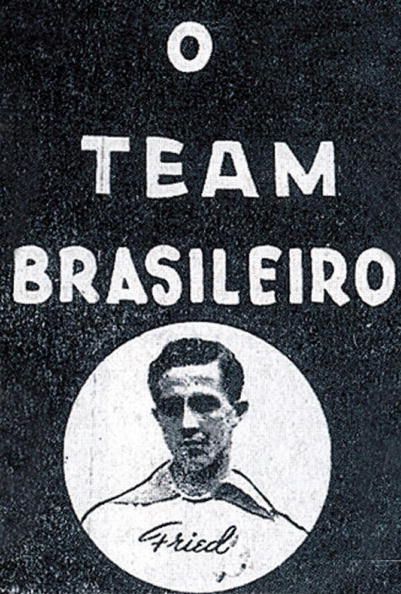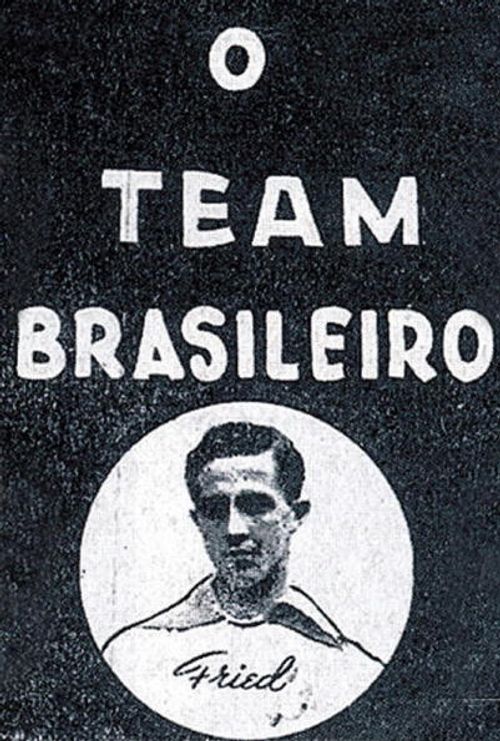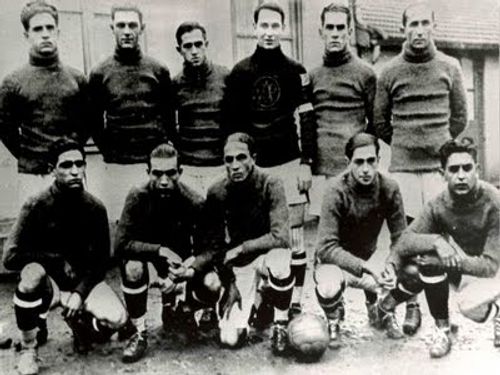
The forgotten legends of football: Arthur Friedenreich

We have all seen today’s skillful and lip-smacking Brazilian national team and the all-efficient, ruthless German national team. Very few have however, wondered what it would be like if we could take one player from each side and cross their chromosomes, to give us a DNA that would be superior above any other. This DNA would give us an offspring, that would give us the perfect modern footballer. An offspring equipped with all the skills required to dominate his opponents in the present climate. On July 18th, 1892, this offspring was born as Arthur Friedenreich.
For all he has done, he remains to this date, one of the most forgotten players in footballing history. Often overshadowed by Pele, he will still remain one of the best footballer’s to have played the game. Though he is largely known for the insane amount of goals he has scored, his contributions to Brazilian society have had such a big impact, that they can still be seen today.
Biography
Arthur Friendenreich was born in Sao Paolo and was the son of German businessman, Oscar Friedenreich who immigrated to Brazil and Mathilde, a Brazilian washerwoman who was the daughter of a freed slave. Arthur’s career in football began solely because of his father, who used to play for Brazilian team made only for German immigrants, the SC Germania. He was seventeen when he joined them in 1909, and then on he became the first black player in Brazilian history to play in the professional league. Over the next few years he was transfered to some of the biggest Brazilian clubs of the time. Namely, São Paulo, Flemengo, Ypiranga, Atlético Mineiro, and Paulistano.
He became the top scorer in 1912 .1914, 1917, 1918, 1919, 1921, 1927 and 1929. No one boasts such an achievement, not even Pele. “The Tiger” as he was affectionately called by the fans played the first ever international game played by Brazil, which they won 2-0. He was an immense dribbler, who never gave up and always had an eye for goal. His fame stretched across Europe after his club Paulistano toured both South America and Europe. By the start of 1920, he was widely regarded as the best football player on the planet.
The Copa America win in 1919, remains his best recorded achievement. He scored the winning goal in the 122nd minute against Uruguay. The boot or “The glorious foot of Friedenreich” as it was called by the fans, was paraded around the streets of Rio de Janeiro. Celebrations went into the night as the boot finally found a coveted spot in local jeweler’s store who was gifted the boot for being a loyal fan of Paulistano.

Arthur Friedenreich in the front row of Brazil team in 1919.
However he was left out of the Brazilian squad that would take part in the 1921 Copa America, after the then President of Brazil , Epitacio Pessoa , announced that only white players would take part as he was embarrassed to imagine black Brazilian players playing in Argentina who had a dominant white population. He retired from club side, Flamengo in 1935 at the age of 43 and died on September the 6th, 1969 at the age of 77. It took way too much time for football historians to realize that they should record his statistics and achievements. In the last few years of his life, he was struck with Alzheimer’s. All that he had ever achieved died with him and many people believe that he couldn’t even remember his own name before his death.
His most incredible achievement will always be the number of goals he has scored, which will unfortunately be a mystery. Many regard the official count to be 1329 goals in 1239 games while supporters of Pele believe it to be the other way around. Another count by a famous historian who accurately counted the number of goals scored by Ferenc Puskas stated it to be around 1395 goals in 355 games with Pele fanatics once again believing it to be the other way round. The highest number of goals he has scored in a season is 33 for Paulistano.
Revolutionary
To understand the kind of impact Friedenreich had on Brazilian football, one must have a deeper look into Brazilian society in the 19th and 20th century. Portuguese and Britishers had set up slave trade bases in Brazil, and were one of the main reasons football spread into the country. Slavery wasn’t abolished until the 13th of May, 1888 . However the damage had been done, and their once upon a time presence on Brazilian soil was one of the main reasons racism has deep roots in Brazilian society. People from all types of ethnic background resided, with the elite white class ruling above others.
The first footballing league was also formed in partnership with Englishman , Charles William Miller. Teams were dominated by white players, with black players regarded to be not intellectual or good enough to play the game. What began as a game for arrogant, aristocratic people was converted to a game which was seen as the biggest source of entertainment to people who couldn’t move around freely in open markets. People from lower classes mingled and formed their own teams to compete. However, some clubs put up restrictions to forbid players from certain levels of society for playing for them. A famous myth in Brazil tells us about a man who got so drunk that he boasted about lying about his history to club officials who wanted players from only specific sections from Brazilian society. As word got around, he was butchered to death on one stormy night.
So what connection does all this have with Arthur Friedenreich? As mentioned before, he started out with SC Germania, a team for German immigrants. Though he was only partially black, he suffered from severe forms of racism that were practiced in Brazil. His exploits were soon noticed and he was called up to play in the professional league. With green eyes and wavy hair, his inborn talent often overshadowed his racial features which he had often been reminded about. He paved the way for other black players, who were never really given a chance to showcase their talent in front of huge crowds. He gave them a platform to challenge the white ruling class, who held immense amount of power in Brazil.
Even after being one of the best players in the world and holding arguably the best social status in the country, he was not allowed to mingle with his team-mates. Forget mingling, even celebration of trophies had a divide between the black and white players. Being half European, he often tried to straighten his hair and powder his skin to look completely white. This would sometimes work, as fans forgot to criticize him for small mistakes. His status grew as other players who had suffered from racial prejudices could relate with a magnificent player like him.
Legacy
A single man who stood up for what he wanted to do, what he loved to do, changed the entire face of a country’s footballing history. All he could ask for, is a little bit of remembrance, and yet he is overshadowed by another man. He broke down the racial segregation that was a major part of the society. He slowly un-rooted them one by one in a career that spanned over 26 years. Despite being the creator of the curved kick Roberto Carlos epitomized, Arthur was never even mentioned. He drank expensive beer, imported French Brandy and partied whenever he was free. He was the ray of hope that the blacks residing in Brazil at the time, desperately craved for.
An entire nation revolted in fury when black players including him were left out of the 1921 Brazilian squad. The white people forgot who they were, where they came from and what status they and their neighboring black protester held in Brazilian society. Though it would be out-rightly stupid to give Arthur Friedenreich all the credit for turning around Brazilian society, but without his perseverance and determination, the world might not have been able to see players like Garrincha and Pele, himself, grace the beautiful game.